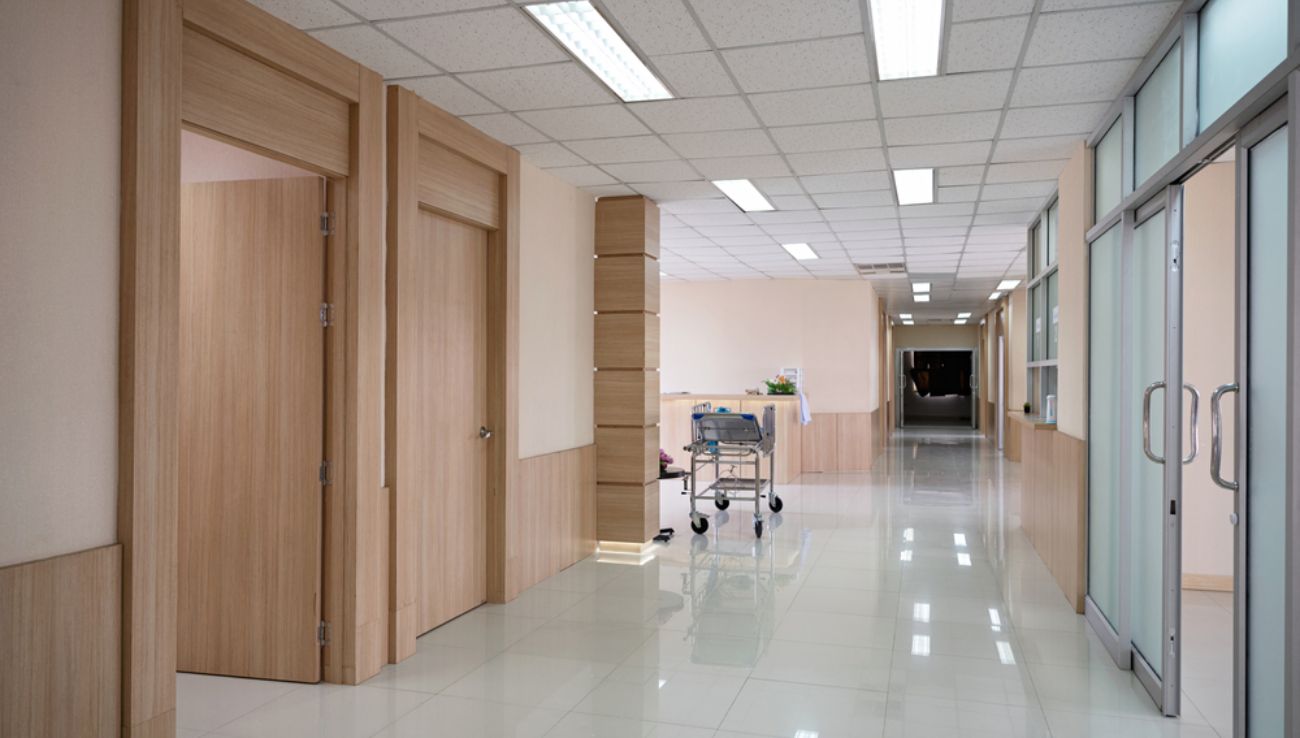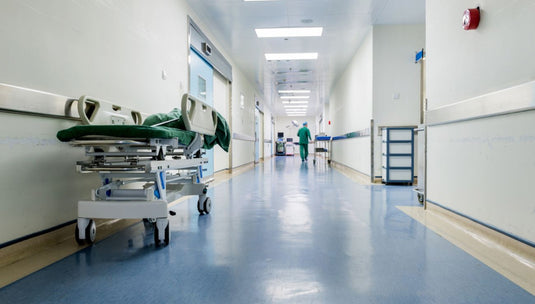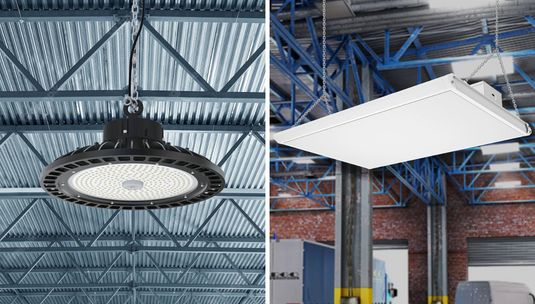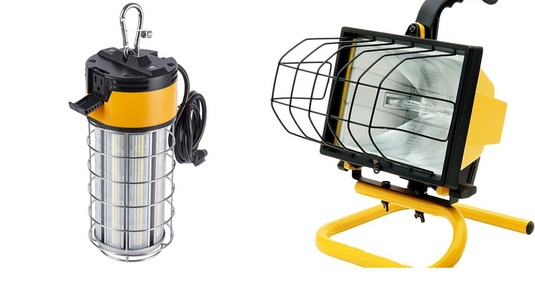1. Introduction
- Understanding the Importance of Lighting in Healthcare Facilities
In healthcare facilities, lighting plays a crucial role beyond just illuminating spaces. It impacts patient recovery, staff productivity, and overall well-being. Therefore, choosing the right lighting solution is essential for hospitals.
2. Benefits of LED Lights in Hospitals
- Energy Efficiency
LED lights are highly energy-efficient compared to traditional lighting sources like incandescent bulbs or fluorescent tubes. They consume less power, resulting in significant cost savings for hospitals in the long run.
- Durability
LED lights are built to last longer than conventional lighting options. Their solid-state construction makes them more resistant to shocks, vibrations, and external damage, ensuring prolonged lifespan and reduced maintenance costs.
- Low Heat Emission
Unlike incandescent bulbs, LED lights emit very little heat. This feature not only reduces the risk of overheating but also helps maintain a comfortable temperature within healthcare environments, enhancing patient comfort and safety.
- Improved Patient Experience
LED lights offer superior brightness control and color rendering properties, creating a more pleasant and soothing environment for patients. This contributes to reduced stress levels, better sleep quality, and overall improved patient experience.

3. Factors to Consider When Choosing LED Lights
- Brightness and Color Temperature
The brightness level and color temperature of LED lights should be carefully selected to meet the specific lighting requirements of different areas within a hospital, such as patient rooms, surgical suites, and corridors.
- Compatibility with Existing Fixtures
Before installing LED lights, hospitals need to ensure compatibility with existing fixtures and infrastructure to avoid compatibility issues and additional installation costs.
- Lighting Controls and Automation
Investing in LED lighting systems with advanced control and automation features allows hospitals to adjust lighting settings according to specific needs, optimize energy usage, and enhance operational efficiency.
- Maintenance and Lifespan
Considering the long-term maintenance requirements and lifespan of LED lights is crucial for hospitals to minimize downtime, reduce maintenance costs, and ensure uninterrupted lighting operations.
4. Top LED Lights Recommended for Hospitals
- LEDMyPlace : High-Performance LED Panels
LEDMyPlace offers high-performance LED Panel Lights designed to deliver uniform illumination, optimal color consistency, and energy-efficient operation, making them ideal for healthcare applications.
- Surgical Suite Lighting Solutions
LEDMyPlace specializes in providing surgical suite lighting solutions that meet the stringent requirements of surgical environments, offering precise illumination, shadow reduction, and adjustable color temperatures for enhanced visibility and surgical precision.
- Patient Room Lighting Systems
LEDMyPlace offers patient room lighting systems that combine functionality with aesthetics, providing customizable lighting options, patient-centric features, and infection control measures to create a comfortable and healing environment for patients.
- Emergency Department Lighting Fixtures
LEDMyPlace provides emergency department lighting fixtures specifically designed to withstand demanding healthcare environments, offering reliable performance, durability, and emergency lighting features for critical care areas.

5. Case Studies: Successful Implementation of LED Lighting
- Fishermen’s Community Hospital: Reduced Energy Costs and Enhanced Ambiance
Fishermen’s Community Hospital implemented LED lighting solutions throughout its facilities, resulting in significant energy savings and improved ambiance, leading to positive feedback from patients, staff, and visitors.
- Improved Surgical Precision and Patient Outcomes
By upgrading to LED surgical lights, Fishermen’s Community Hospital experienced enhanced surgical precision, reduced glare, and improved patient outcomes, contributing to overall operational efficiency and patient satisfaction.
- Enhanced Staff Productivity and Comfort
Fishermen’s Community Hospital adopted LED lighting systems in staff areas, leading to increased productivity, reduced eye strain, and enhanced staff comfort, resulting in a more conducive working environment.
6. Challenges and Solutions
- Initial Investment vs. Long-term Savings
One of the main challenges hospitals face when transitioning to LED lighting is the initial investment cost. However, the long-term savings in energy bills, maintenance costs, and improved operational efficiency outweigh the upfront expenses.
- Ensuring Compatibility with Healthcare Regulations
Hospitals must ensure that LED lighting solutions comply with healthcare regulations and standards to maintain patient safety, infection control, and environmental sustainability.
- Addressing Concerns Regarding Flickering and Glare
To address concerns related to flickering and glare, hospitals should invest in high-quality LED products with built-in features such as flicker-free technology and glare reduction mechanisms to ensure optimal lighting conditions.
- Training Staff for Optimal Use and Maintenance
Proper training and education for staff members on the use, maintenance, and benefits of LED lighting are essential to maximize the potential of LED systems and ensure their efficient operation over time.

7. Future Trends in LED Lighting for Healthcare
- Integration with IoT and Smart Building Technologies
The integration of LED lighting with IoT (Internet of Things) and smart building technologies enables hospitals to implement advanced lighting control systems, predictive maintenance solutions, and real-time monitoring capabilities for improved efficiency and performance.
- Advancements in Circadian Lighting for Patient Well-being
Advancements in circadian lighting technology allow hospitals to mimic natural daylight patterns, regulate circadian rhythms, and promote better sleep quality and overall well-being among patients and staff.
- Customizable Lighting Solutions for Different Hospital Settings
The development of customizable LED lighting solutions tailored to specific hospital settings, such as operating rooms, patient rooms, and waiting areas, allows for personalized lighting experiences and improved comfort for patients and staff.
- Environmental Sustainability Initiatives
With a growing focus on environmental sustainability, hospitals are increasingly adopting LED lighting solutions as part of their green initiatives to reduce carbon footprint, minimize energy consumption, and contribute to a healthier planet.
8. Conclusion
- The Transformative Potential of LED Lighting in Healthcare Facilities
LED lighting offers numerous benefits for hospitals and healthcare facilities, ranging from energy efficiency and durability to improved patient experience and staff productivity. By carefully selecting and implementing the right LED lighting solutions, hospitals can enhance operational efficiency, reduce costs, and create a safer and more comfortable environment for patients and staff alike.
9. FAQs (Frequently Asked Questions)
Q1. Are LED lights suitable for all areas within a hospital?
- A: LED lights can be tailored to suit various spaces, including patient rooms, surgical suites, hallways, and waiting areas.
Q2. How do LED lights contribute to energy savings?
- A: LED lights consume less energy compared to traditional lighting sources, resulting in reduced utility bills for hospitals.
Q3. Can LED lights be dimmed or adjusted according to specific needs?
- A: Yes, many LED lighting systems come with dimming capabilities, allowing for customized illumination levels.
Q4. Are there any potential health benefits associated with LED lighting in healthcare settings?
- A: LED lights can support patient recovery by providing better visibility, reducing eye strain, and promoting a conducive healing environment.
Q5. What steps should hospitals take to ensure a smooth transition to LED lighting?
- A: Hospitals should conduct thorough research, assess their lighting needs, seek expert advice, and invest in quality LED products for optimal results.




